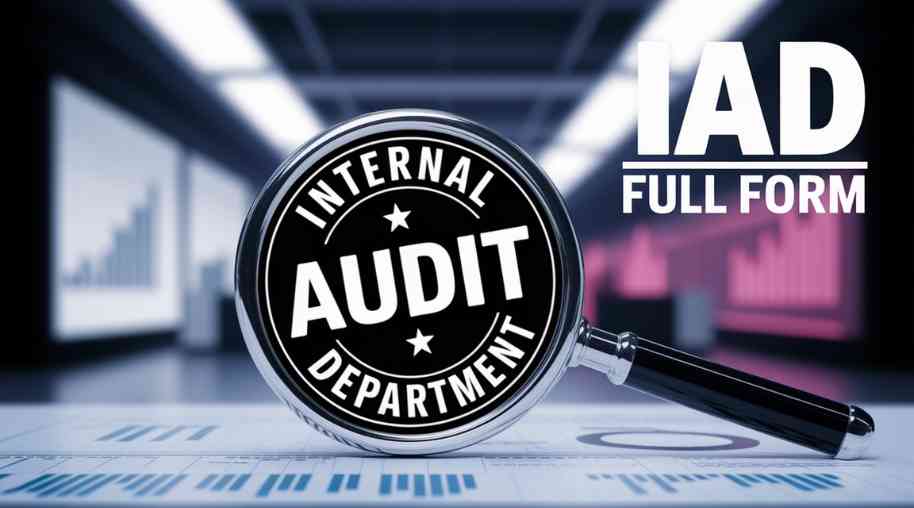IRB Full Form-Internal Rating Based
by Shashi Gaherwar
0 2127
Internal Rating Based Approach: A Framework for Risk Assessment in Banking
The Internal Rating Based (IRB) approach is a risk assessment framework used by banks and financial institutions to evaluate credit risk and determine capital requirements. Introduced under the Basel II Accord, this approach allows banks to develop internal models to measure risk, subject to regulatory guidelines.
The IRB approach plays a crucial role in modern banking and financial risk management, providing greater accuracy in credit assessment and flexibility in regulatory capital calculation. This article explores the concept, working, types, benefits, and challenges of the IRB framework.

Understanding the Internal Rating Based Approach
1. What is the Internal Rating Based (IRB) Approach?
- The Internal Rating Based (IRB) approach is a methodology that allows banks to use their own internal risk models to calculate the probability of default (PD), loss given default (LGD), exposure at default (EAD), and other risk parameters.
- These calculations determine the minimum capital requirements for credit risk.
- Under the IRB approach, banks must:
- Develop robust risk models for assessing credit risk.
- Ensure regulatory compliance by following Basel II and Basel III guidelines.
- Obtain regulatory approval before using internal ratings for capital computation.
2. Regulatory Background: Basel Norms
- The Basel Committee on Banking Supervision (BCBS) introduced the IRB approach under Basel II to provide a more risk-sensitive framework for capital requirements.
- The Basel Accords outline two primary credit risk measurement approaches:
- Standardized Approach: Uses external credit ratings (e.g., ratings from Moody’s, S&P, and Fitch).
- Internal Rating Based Approach: Allows banks to develop and use their own internal models for risk measurement.
Types of Internal Rating Based Approaches
The IRB framework is divided into two main approaches:
1. Foundation IRB (F-IRB) Approach
- Banks estimate Probability of Default (PD) for borrowers using internal models.
- Other risk components like Loss Given Default (LGD), Exposure at Default (EAD), and Maturity (M) are provided by regulatory guidelines.
- Suitable for banks with less advanced risk management capabilities.
2. Advanced IRB (A-IRB) Approach
- Banks independently estimate all risk components (PD, LGD, EAD, and M) using internal models.
- Requires extensive historical data, advanced risk modeling, and strict regulatory oversight.
- Provides greater accuracy and capital efficiency but demands higher compliance requirements.
How the Internal Rating Based Approach Works
The IRB approach follows a structured process for assessing risk and determining capital requirements:
Step 1: Risk Model Development
- Banks collect historical data on borrower defaults, loan performance, and market conditions.
- Develop statistical models to estimate PD, LGD, and EAD.
- Ensure model validation through stress testing and backtesting.
Step 2: Borrower Risk Classification
- Customers are assigned internal credit ratings based on financial health, repayment history, and industry risk.
- Ratings are periodically reviewed to reflect changing risk factors.
Step 3: Capital Requirement Calculation
- The bank calculates capital reserves using risk-weighted assets (RWA).
- Higher-risk borrowers require higher capital buffers.
Step 4: Regulatory Compliance and Approval
- Banks submit their models for regulatory review and approval.
- Periodic audits ensure compliance with Basel II and Basel III guidelines.
Benefits of the Internal Rating Based Approach
The IRB approach offers several advantages for banks, regulators, and financial markets:
1. Improved Risk Sensitivity
- Internal models allow banks to assess risk with greater accuracy.
- Helps in identifying high-risk borrowers and mitigating potential losses.
2. Capital Efficiency
- More precise risk measurement leads to optimized capital allocation.
- Encourages banks to maintain adequate capital reserves based on actual risk exposure.
3. Flexibility in Credit Assessment
- Unlike the Standardized Approach, IRB models consider internal borrower ratings.
- Provides banks with a customized risk evaluation framework.
4. Encourages Robust Risk Management
- Banks adopt advanced risk management practices.
- Enhances financial stability by reducing exposure to high-risk lending.
Challenges of Implementing the IRB Approach
Despite its advantages, the IRB approach presents certain challenges for banks:
1. High Implementation Costs
- Developing internal credit models requires significant financial investment.
- Compliance with Basel regulations adds administrative costs.
2. Data Collection and Management Issues
- IRB models require large volumes of historical data for accuracy.
- Data inconsistencies can lead to incorrect risk estimates.
3. Regulatory Complexity and Approval Process
- Banks must undergo rigorous validation processes to gain regulatory approval.
- Stricter oversight may slow down risk model implementation.
4. Potential for Model Risk and Manipulation
- Inaccurate risk modeling may underestimate or overestimate credit risk.
- Some institutions may manipulate risk parameters to reduce capital requirements.
Future of the Internal Rating Based Approach
As banking regulations evolve, the IRB approach is expected to undergo further enhancements:
1. Integration with AI and Machine Learning
- AI-powered risk models will improve credit risk predictions.
- Machine learning algorithms will enhance default probability estimation.
2. Stricter Basel III and Basel IV Regulations
- Future frameworks may impose stricter capital requirements.
- Regulators will enhance supervisory mechanisms for IRB models.
3. Increased Adoption of Fintech Solutions
- Fintech firms will offer innovative risk management tools.
- Advanced real-time data analytics will improve model accuracy.
The Internal Rating Based (IRB) approach is a critical component of modern banking risk management, offering enhanced risk sensitivity and capital optimization. While it requires significant investment and regulatory compliance, its benefits in credit risk assessment and financial stability make it a valuable tool for banks.
With evolving Basel regulations and technological advancements, the IRB framework will continue to play a pivotal role in shaping the future of banking and financial risk management.
Further Learning Resources
If you’re passionate about building a successful blogging website, check out this helpful guide at Coding Tag – How to Start a Successful Blog. It offers practical steps and expert tips to kickstart your blogging journey!
For dedicated UPSC exam preparation, we highly recommend visiting www.iasmania.com. It offers well-structured resources, current affairs, and subject-wise notes tailored specifically for aspirants. Start your journey today!

Share:








Comments
Waiting for your comments